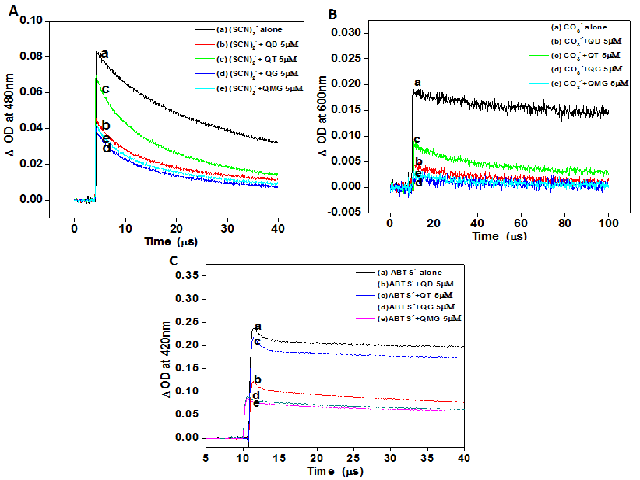Antioxidant Profiling of C3 Quercetin Glycosides: Quercitrin, Quercetin 3-β-D-glucoside and Quercetin 3-O-(6”-O-malonyl)-β-Dglucoside in Cell Free Environment
DOI:
https://doi.org/10.5530/fra.2015.2.7Keywords:
C3 quercetin glycosides, DNA protection, Free radical scavenging, Mitochondrial lipid peroxidation and protein sulphydryl depletion, Pulse radiolysisAbstract
Introduction: Flavonoid Quercetin is a major constituent of fruits and vegetables which naturally exists in the form of its glycosides, foremost as C3 glycosides. Three Quercetin glycosides namely quercitrin, quercetin 3-β-D-glucoside and quercetin 3-O-(6”-O-malonyl)-β-D-glucoside, differing at their C3 glycosylation were explored for their antioxidant properties and were compared to the parent quercetin. Methods: Free radical scavenging ability of quercetin glycosides was assessed by UV-VIS spectrophotometry, pulse radiolysis and cyclic voltammetry. Their protective effects in Fenton radical induced DNA strand breaks and mitigating oxidative stress in subcellular organelles such as mitochondria were also examined. Results: Unlike earlier reports we found that C3 glycosides of quercetin exhibited better free radical scavenging in cell free environment. These glycosides effectively protected pBR322 DNA against Fenton radical induced-DNA strand breaks and this could be attributed to their interaction with 2 deoxy guanosine base transient. However, amongst these glycosides, Quercetin 3-O-(6”-O-malonyl)-β-D-glucoside which exhibited excellent antioxidant ability in cell-free environment, could not effectively protect mitochondria from lipid peroxidation but conferred protection against protein sulphydryl depletion at lower concentrations. Conclusion: All quercetin glycosides exhibited excellent antioxidant activities in cell free environment but did not exert comparable protective effects in biological systems. Varied responses of these derivatives can be attributed to their C3 glycosylation and the derivatizations at C3 sugars.
Downloads
Metrics





